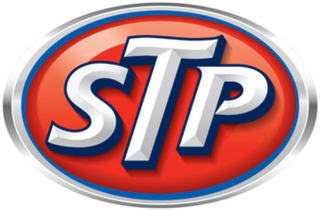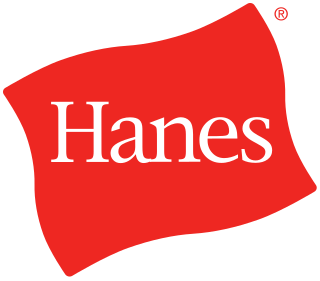
Energizer Holdings, Inc. is an American manufacturer and one of the world's largest manufacturers of batteries, headquartered in St. Louis, Missouri. It produces batteries under the Energizer, Ray-O-Vac, Varta, and Eveready brand names and formerly owned several personal care businesses until it separated that side of the business into a new company called Edgewell Personal Care in 2015.
Tampax is a brand of tampons currently owned by Procter & Gamble. It was based in White Plains, New York, US until its sale to Procter & Gamble in 1997. It is a subsidiary of P&G's Always brand and is sold in over 100 countries.

Fruit of the Loom is an American company that manufactures clothing, particularly casual wear and underwear. The company's world headquarters is in Bowling Green, Kentucky. Since 2002, it has been a wholly owned subsidiary of Berkshire Hathaway.

The Wonderbra is a type of push-up underwire brassiere that gained worldwide prominence in the 1990s. Although the Wonderbra name was first trademarked in the U.S. in 1955, the brand was developed in Canada. Moses (Moe) Nadler, founder and majority owner of the Canadian Lady Corset Company, licensed the trademark for the Canadian market in 1939. By the 1960s the Canadian Lady brand had become known in Canada as "Wonderbra, the company." In 1961 the company introduced the Model 1300 plunge push-up bra. This bra became one of the best-selling Canadian styles and is virtually identical to today's Wonderbra.

The Sara Lee Corporation was an American consumer-goods company based in Downers Grove, Illinois. On July 4, 2012, Sara Lee Corporation was split into two companies: one for North American operations renamed Hillshire Brands, the other for international beverage and bakery businesses named D.E Master Blenders 1753.

STP is an American brand of automotive aftermarket products, especially lubricants such as motor oil and motor oil additives. The name began as an abbreviation of Scientifically Treated Petroleum. The brand has been owned by Energizer Holdings since November 2018.
Beatrice Foods Company was a major American food processing company founded in 1894. Over the years, Beatrice owned many well-known brands such as Tropicana, Dannon, Krispy Kreme, Jolly Rancher, Orville Redenbacher's, Swiss Miss, Peter Pan, Martha White, Playtex, La Choy, Samsonite and Avis Car Rental.

VF Corporation is an American global apparel and footwear company founded in 1899 by John Barbey and headquartered in Denver, Colorado. The company's 13 brands are organized into three categories: Outdoor, Active and Work. In 2015, the company controlled 55% of the U.S. backpack market with the JanSport, Eastpak, Timberland, and The North Face brands.

Hanes and Hanes Her Way is a brand of clothing.
Hanes Australasia, formerly Pacific Brands, is an Australian consumer products company. It a business unit of the American company Hanesbrands.
Hanesbrands Inc. is an American multinational clothing company based in Winston-Salem, North Carolina. It employs 65,300 people internationally. On September 6, 2006, the company and several brands were spun off by the Sara Lee Corporation.

Carter's, Inc. is a major American designer and marketer of children's apparel. It was founded in 1865 by William Carter.

Calvin Klein Inc. is an American fashion house which markets its eponymously branded products worldwide. The company, which became famous for its designer underwear and denim lines in the 1980s, specializes in mass-market ready-to-wear clothing for all genders and age groups as well as leather products, lifestyle accessories and shoes, home furnishings, perfume/cosmetics, eyewear, jewelry and watches in the mid-price segment. Its high-end runway fashion division, which represented the top level of the various Calvin Klein sub-brands, was discontinued in 2019.

Lil-lets is a brand providing feminine hygiene products that operates principally in the UK, Ireland and South Africa. Since 2000, the company has restructured through two management buyouts (MBO) to become a business crossing all sectors of the feminine hygiene market, including tampons, sanitary napkins, pantyliners and intimate care. They also do programmes for schools that teach young girls the changes that occur when they begin to menstruate.
Arbora & Ausonia was a company that dealt in the manufacturing and sale of absorbent products for the child and family hygiene, feminine hygiene and adult incontinence markets. It fully merged into Procter & Gamble in 2013.
DBApparel, also known as DBA is a group of companies who manufacture well-known brands of clothing (lingerie), and is based in France.

The Edgewell Personal Care Company is an American multinational consumer products company headquartered in Shelton, Connecticut. It was formed in 2015 following the corporate spin-off from Energizer Holdings. Edgewell Personal Care was formed by the renaming of the original Energizer Holdings; Energizer's battery business was then spun-off as Energizer Household Products and then renamed Energizer Holdings.

o.b. is a brand of tampon, originally developed in Germany in 1950 and manufactured by Carl Hahn GmbH. It is now owned by Edgewell Personal Care. The product was named by the gynecologist Judith Esser-Mittag who also developed it. The initials o.b. are an abbreviation of the German phrase ohne Binde.
Sycamore Partners is a private equity firm based in New York specializing in retail and consumer investments. The firm has approximately $10 billion in aggregate committed capital.
Joel E. Smilow is an American philanthropist and former CEO of Playtex.




















